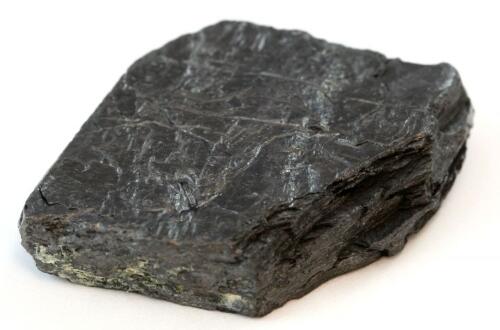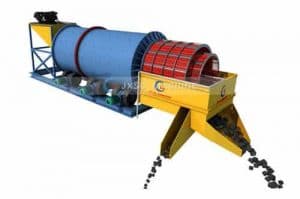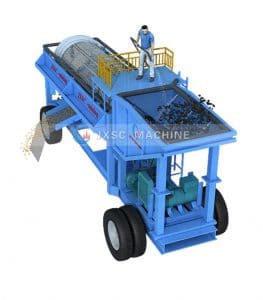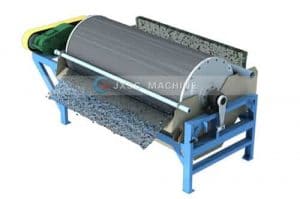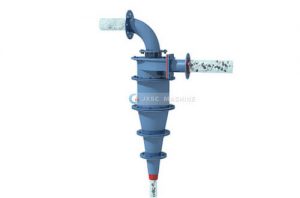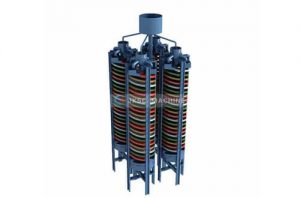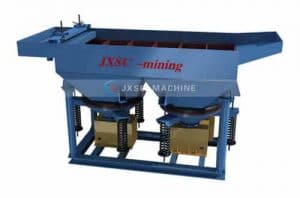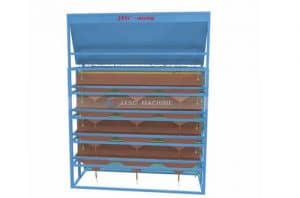Graphite Mining
What is Graphite
Pure graphite is a mineral form of the element carbon (element #6, symbol C). It forms as veins and disseminations in metamorphic rocks as the result of the metamorphism of organic material included in limestone deposits. It is an extremely soft mineral and it breaks into minute, flexible flakes that easily slide over one another. This feature accounts for graphite’s distinctive greasy feel. This greasy characteristic makes graphite a good lubricant. Because it is a solid material, it is known as a dry lubricant. This is useful in applications where “wet” lubricants, such as oil, cannot be used. Graphite is the only non-metal element that is a good conductor of electricity. Natural graphite is used mostly in what are called refractory applications. Refractory applications are those that involve extremely high heat and therefore demand materials that will not melt or disintegrate under such extreme conditions. One example of this use is in the crucibles used in the steel industry. Such refractory applications account for the majority of the usage of graphite.
It is also used to make brake linings, lubricants, and molds in foundries. A variety of other industrial uses account for the remaining graphite consumed each year.
Graphite Mining
From 1890 to 1920, underground mining of graphite was practiced in New York and Pennsylvania. From 1942 until the end of World War II, only open-pit methods were used, because working weathered rock was relatively easy. Graphite was mined underground at Dillon, Montana, during World War II, but shortly thereafter mining ceased because it was too costly to compete with Sri Lankan graphite.
Madagascar operations are entirely open pit, but in Bavaria, Korea, Mexico, and Sri Lanka, because of the depth and physical characteristics of the deposits, underground mining is practiced. Mexican underground mining operations are 100–400 m below the surface, measured on the angle of the vein. Some of the older mines in Sri Lanka reached depths in excess of 450 m on a vertical plane. For many years, mining operations in Sri Lanka were primitive and ore extraction was slow and cumbersome. The mines were mechanized after World War II.
Madagascar operations also were primitive because low labor costs prohibited mechanization. After 1938 the mines began to use mechanical equipment to remove the overburden, and bulldozers and tractors easily removed the graphite-bearing schists.
Worldwide demand for graphite steadily increased throughout 2012 and into 2013. This increase resulted from the improvement of global economic conditions and its impact on industries that use graphite.
Principal import sources of natural graphite were, in descending order of tonnage, China, Mexico, Canada, Brazil, and Madagascar, which combined accounted for 97% of the tonnage and 90% of the value of total imports. Mexico and Vietnam provided all the amorphous graphite, and Sri Lanka provided all the lump and chippy dust variety. China, Canada, and Madagascar were, in descending order of tonnage, the major suppliers of crystalline flake and flake dust graphite.
During 2013, China produced the majority of the world’s graphite. Graphite production increased in China, Madagascar, and Sri Lanka from that of 2012, while production decreased in Brazil from 2012 production levels.
Graphite Uses
Because graphite flakes slip over one another, giving it its greasy feel, graphite has long been used as a lubricant in applications where “wet” lubricants, such as oil, can not be used. Technological changes are reducing the need for this application.
Natural graphite is used mostly in what are called refractory applications. Refractory applications are those that involve extremely high heat and therefore demand materials that will not melt or disintegrate under such extreme conditions. One example of this use is in the crucibles used in the steel industry. Such refractory applications account for the majority of the usage of graphite.
It is also used to make brake linings, lubricants, and molds in foundries. A variety of other industrial uses account for the remaining graphite consumed each year.
JXSC Mining Processing
---Diamond Processing Plant---
8TPH Diamond Mining Process in Angola
18TPH Alluvial Gold & Diamond Mining Process in Angola
50TPH Alluvial Diamond Mining Process in Central African
50TPH Diamond Extraction Process Flow Chart
60TPH Alluvial Diamond Extraction Process in Venezuela
75TPH Diamond Dense Medium Separation Process in Congo
---Chrome Processing Plant---
1.2TPH Chromite Ore Beneficiation Process Flow
15TPH Chrome Ore Beneficiation Process in Ukraine
24TPH Chrome Ore Processing Plant in South Africa
25TPH Chromite Ore Concentrating Plant in South Africa
50TPH Chromite Ore Beneficiation Process in South Africa
---Silica Processing Plant---
50TPH Silica Sand Processing Plant in Indonesia
65TPH Silica Sand Washing Plant in Malaysia
100TPH Silica Sand Processing & Washing Plant in Malaysia
20TPH Beach Sand Mining Plant in India
100TPH Beach Sand Zircon Mining Plant in Sierra Leone
---Coltan Processing Plant---
10TPH Coltan Ore Mining Plant in Liberia
10TPH Alluvial Coltan Process Plant In Mozambique
20TPH Tantalum Niobium Mining Plant in Uganda
25TPH Tantalite Mining Plant in Burundi
100TPH Alluvial Coltan Processing Plant in Nigeria
100TPH Tantalite Ore Processing Plant in Sierra Leone
150TPH Coltan Ore Processing Plant in Ghana
---Lead, zinc, iron, manganese, etc---
15TPH Tailings Lead & Barite Extraction Plant in Iran
30TPH Rock Lead Zinc Process Plant in Morocco
200TPH Rock Manganese Mining Plant in Zambia
150TPH Iron Ore Processing Plant in Malaysia
8TPH Gold & Tin Extraction Process in Zimbabwe
10TPH Tin Ore Slag Beneficiation Processing Plant in Malaysia
50TPH Alluvial Tin Ore Mining Plant in Nigeria
3TPH Barite Beneficiation Process Plant in Morocco
---Gold Washing Plant---
0.5TPH Portable Hard Rock Gold Processing Plant in Sudan
0.5TPH Small Rock Gold Processing Plant In Sudan
1T/H Rock Gold Processing Plant In India
2TPH Quartzite Gold Wash Plant In Africa
2TPH Small Scale Rock Gold Processing Plant In Congo
4TPH Gold Ore Processing Plant In Zimbabwe
5T/H Rock Gold Processing Plant In Tanzania
5TPH Quartz Rock Gold Mining Process in Nigeria
10TPH Alluvial Coltan Process Plant In Mozambique
10TPH Copper Mining Process Plant In Zambia
10TPH Sulfide Gold Processing Plant In Ghana
20TPH Rock Contain Gold Mining Process in Zimbabwe
20TPH Alluvial Gold & Hard Rock Gold Processing Plant in Madagascar
30TPH Placer Gold & Rock Gold Wash Plant in Zambia
50TPH Gold Washing Plant In Uzbekistan
50TPH Alluvial Gold Mining Process In Ghana
50TPH Alluvial Gold Washing Plant In Sierra Leone
60TPH Wheel Mobile Gold Processing Plant In Mali
60TPH Gold Processing Plant In Russia
60TPH Mobile Alluvial Gold Wash Plant In Ghana
60TPH Small Portable Gold Wash Plant in Mali
75TPH Hard Rock Gold Mining Plant in Sudan
100TPH Clay Alluvial Gold Washing Plant In Ghana
100TPH Alluvial Gold & Diamond Processing Plant in Congo
100TPH Rock Copper & Cobalt Ore Process Plant In Congo
100TPH Tailings Copper & Zinc Process Plant In Kyrgyzstan
100TPH Gold Tailings Processing Plant In Uganda
100TPH Placer Gold Processing Plant In Kyrgyzstan
100TPH Alluvial Deposit Gold Processing Plant In Ghana
100TPH Alluvial Gold Wash Plant In Suriname
100TPH Alluvial Rock Gold Washing Plant In Mozambique
167THP Crusher Plant and 42TPH Rock Gold Processing Plant In Zimbabwe
200TPH Alluvial Gold Wash Plant In Ghana


